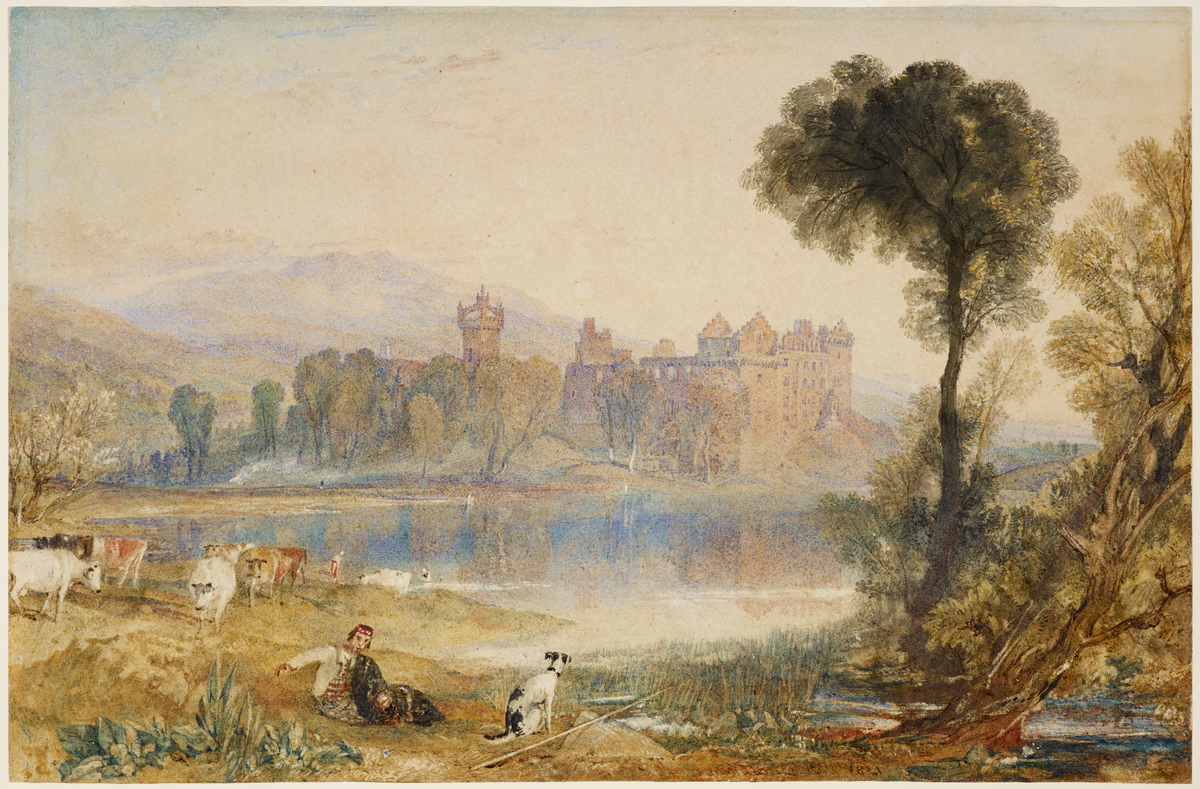Linlithgow Palace
Joseph Mallord William Turner 1775 - 1851
Summary
View from hillside across river to Palace. In the foreground a man, in traditional Scottish dress, is seated on a grassy slope, looking towards the viewer, a dog seated next to him. To his left, cattle graze close to the lake. To the right are several trees at the lakeside. Across the calm lake is a large sixteenth century palace with stepped gables at upper level, surrounded by trees. A spire rises above the trees on the left with most of the palace visible on the right. Hills can be seen in the distance.
Display Label
A Highland Romance: Victorian Views of Scottishness The popular idea of Scottishness in the 1800s came from Sir Walter Scott (1771–1832), who fictionalised exciting episodes from Scottish history. He created a colourful Highland identity for his nation, based on the customs and landscape of the sparsely populated mountainous areas. For Lowland Scots – the majority of the population – it was a fiction they took up gladly, perhaps because it emphasised difference from the English. However, most Victorians, Scots and English, felt cultural difference to be perfectly compatible with political union. Queen Victoria’s regular visits to Scotland encouraged the English to view it as a simple country retreat. By the end of her reign her wealthier English subjects came to regard Scotland principally as an arena for shooting, fishing and golf. Artists from both sides of the border visualised the stags, castles, mountains and tartan that made up this Victorian myth. Their paintings reaffirmed impressions gleaned from Scott’s novels and from tourist guide books to Scotland. The fact that Scotland was an industrialised nation taking an active part in the British Empire was largely ignored. Popular art and literature fed the ‘tartan monster’, refining a checklist of clichés that even today remain key to the marketing of Scotland. A number of local industrialist patrons who bought paintings with Scottish subjects later gave them to Manchester Art Gallery. As a result the Gallery has a particularly good late Victorian collection. Here is ‘Scottishness’, as seen from Manchester in the late 1800s.
Object Name
Linlithgow Palace
Creators Name
Date Created
1821
Dimensions
support: 17.2cm x 25.8cm
accession number
1998.41
Collection Group
Support
paper
Medium
watercolour
bodycolour
gum arabic
Legal
© Manchester Art Gallery

